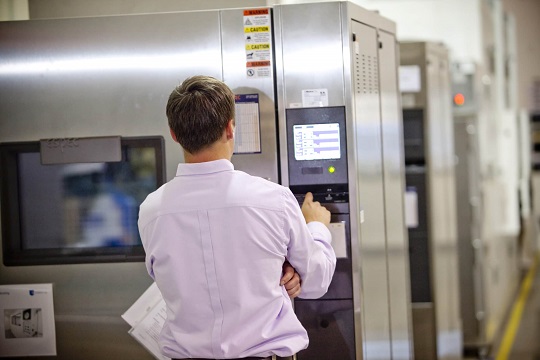

Do we really need environmental preconditioning during the package testing process?
In the Medical Device and Pharmaceutical industries, the purpose of a package testing lab is to provide a level of confidence that product will reach the market sterile, and safe for the end-consumer. Each product-package system is different, goes through different distribution environments, and interacts with their surroundings in unique ways. Environmental preconditioning is the way to mimic those different distribution environments and interactions.
Before designing a package system try to understand the supply chain first. Throughout a packages lifetime, a medical device could be packed out, sealed, transported to a sterilizer, delivered to a warehouse, and maybe even another warehouse before making it to the end-consumer! Of course, there could always be fewer or more phases to a packages supply chain.
The short answer is, it depends on a multitude of factors (read below for deeper insight)!
Back to Basics
As the new year begins, let’s take a second and get back to basics. Regarding environmental preconditioning, there are three key factors that are taken into consideration: temperature, relative humidity, and time.
Environmental preconditioning is utilized during package testing to simulate conditions that packages and products will be subjected to over time. Preconditioning occurs prior to the transit simulation portion of testing to understand if package materials can withstand the environmental conditions seen throughout its anticipated life cycle.
Empathizing with Your Product-Package System
Think about what the package is subjected to during its supply chain. Whether the package is aging overtime in a warehouse environment or being distributed between supply chain checkpoints, the package and product are always being subjected to environmental conditions that constantly change.
Product-package systems could be stored in warehouses that are in different regions across the world. For instance, take a warehouse in Texas in the middle of summer, and compare it to one in Michigan, in the dead of winter. Imagine what the package goes through. In Texas the temperature may be 100⁰F with a relative humidity of 85%. The same package system could be subjected to the other side of the environmental condition spectrum at -22⁰F in Michigan.
Next up—the dynamic life of a package throughout the distribution environment!
After the warehouse environment, the product-package system needs to get to the end-consumer. This could be done via distribution modes such as truck, ocean-freight, air, rail, etc. During distribution, packages are subjected to varying temperature and humidity levels for Depending on where a package is coming from, where it is going to, and how it is getting there a package is subjected to varying temperatures and humidity levels for intermittent periods of time.
Lastly, as seasons come and go, almost every region goes through different temperatures and humidity level cycles. This is important to keep in mind when debating environmental preconditioning. Even if your packages distribution channel is only in one region, that regions environmental conditions can change with the season!
At this point, you may still be thinking, ‘Is environmental preconditioning really needed?
This certainly depends on a variety of factors, but the bottom line is that the package system needs to maintain integrity of the sterile-barrier system (SBS). As discussed earlier, the purpose of package testing is to provide a level of confidence that product will reach the market sterile, and safe for the end-consumer. Including environmental preconditioning to your projects package test plan will give you a better understanding of your product-package systems ability to maintain performance through anticipated environmental conditions.
To understand how Packaging Compliance Labs (PCL) can support your understanding of package testing and environmental preconditioning – read below!
Plan Accordingly Based on Your Travels
When deciding what environmental preconditioning parameters to use for package testing, it is best practice to test to anticipated conditions. Knowing your products supply chains exact environmental conditions can be difficult to gauge and is constantly fluctuating throughout the year. Environmental preconditioning guidance is provided by standards such as ASTM D4332 and ISTA 3A. Conditions provided by these standards are generalized for typical environmental conditions such as tropical and extreme cold with uncontrolled relative humidity, etc.
When deciding whether or not to use environmental preconditioning or which standard condition profile to use, talk to one of Packaging Compliance Labs subject matter experts!
Packaging Compliance Labs (PCL) supports our clients Speed to Market with Confidence with our testing and engineering services. Our labs core competencies include accelerated aging testing to simulate product-package systems being subjected to the warehouse environment, environmental preconditioning and transit simulation, and integrity testing, to understand if SBS’s maintain sterile integrity after accelerated aging and/or transit simulation.